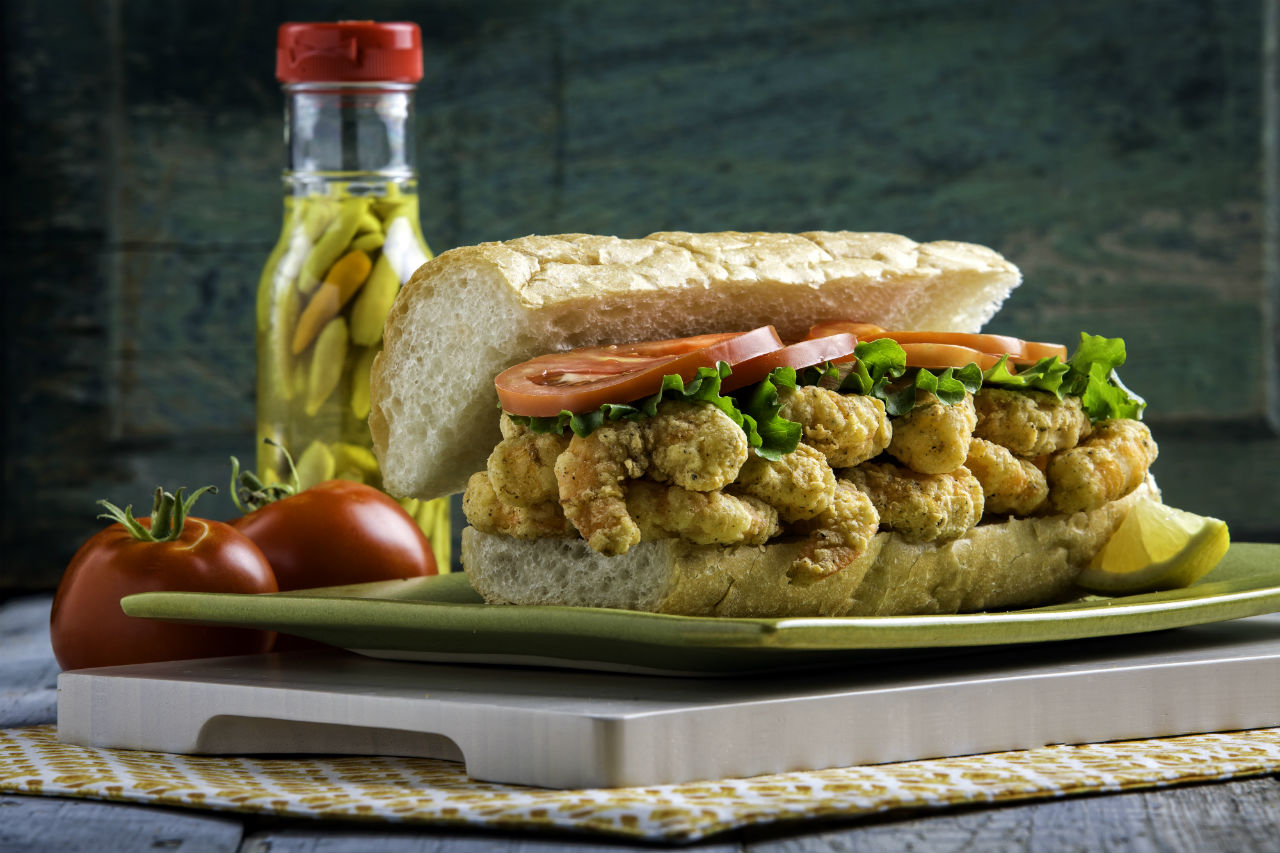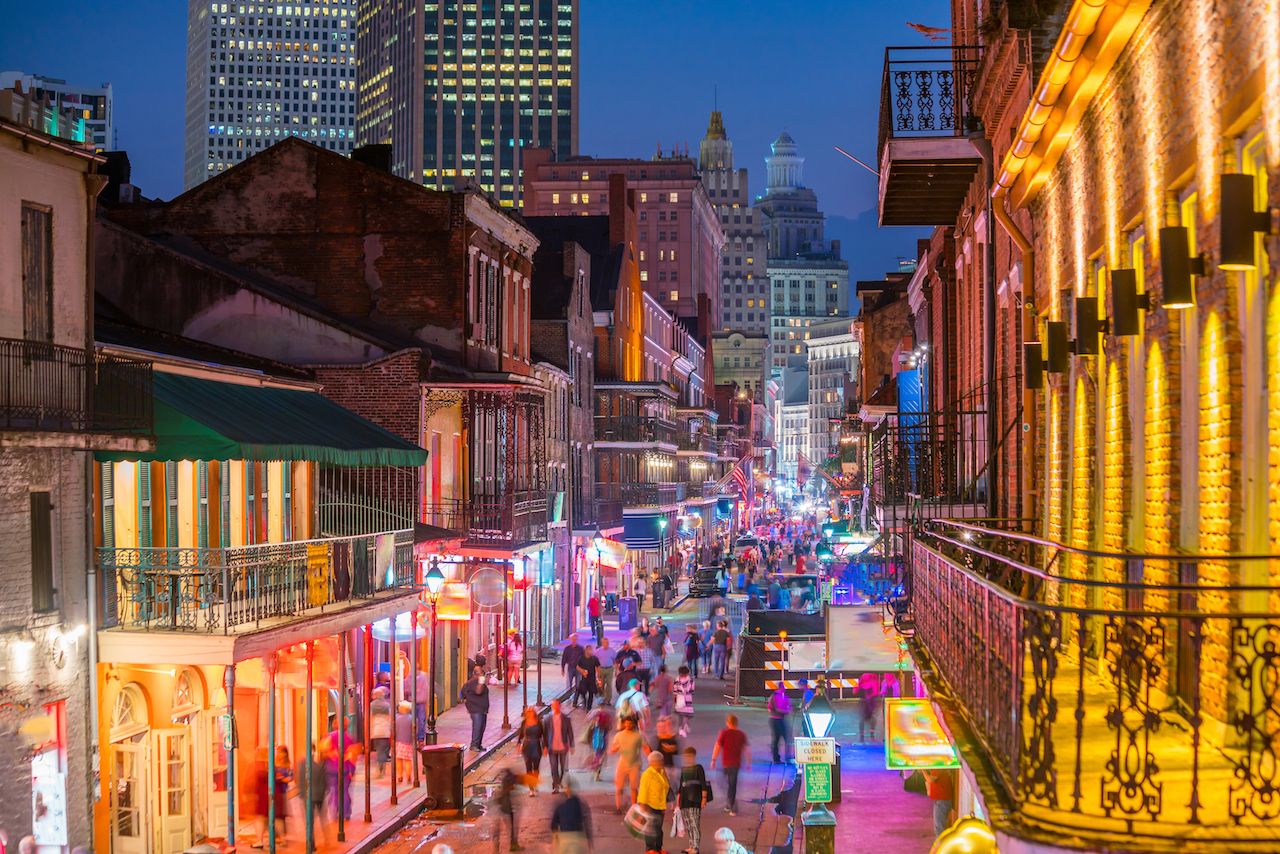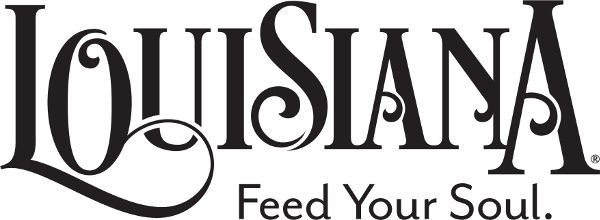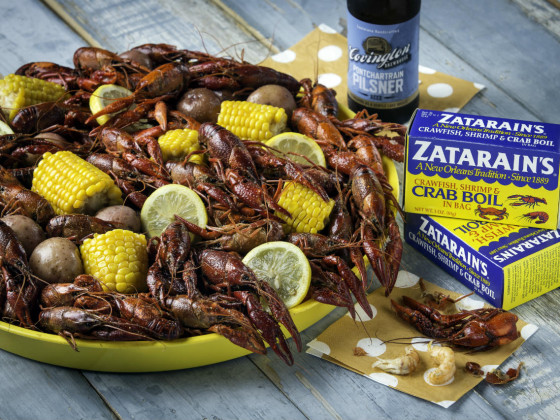Do you want your po’boy “dressed?” Have you ever attended a “fais-do-do?” Has anyone ever put any “gris gris” on ya? Hope not!
Next time you’re in Louisiana, you’re going to want to “pass a good time” — and you can’t do that sitting there with a furrowed brow and a dictionary. Here’s all the Louisiana slang you need to know before traveling to the Bayou State. Laissez les bon temps rouler!
1. “Pinch the tail and suck the head.”
A tawdry-sounding phrase, but it’s actually how you eat crawfish. Once the head of the crawfish is separated from the tail you pinch the bottom — loosening up the meat to eat it — and then you suck deliciously seasoned juices from the crawfish head.
Crawfish can be enjoyed across the state each spring, but there’s no place better than the Crawfish Capital of the World, Breaux Bridge (that first word is pronounced bro), about 10 miles northeast of Lafayette. For three days at the beginning of May, its crawfish festival has everything from crawfish races to zydeco music, and there are plenty of opportunities to pinch the tail and suck the head.
2. “Pass a good time”

Photo: Sean Pavone/Shutterstock
Louisiana is all about fun, and locals and visitors love to pass a good time, which means to have a good time.
In March, if you head to the Battle of the Gumbo Gladiators in Shreveport, you’ll definitely learn the meaning of the phrase. This fundraising event has been brewing for the last four years and gumbo samples are only a dollar.
3. “Dressed”
This has nothing to do with clothing and everything to do with how you order your po’boy, a sandwich served on French bread that’s crispy on the outside and soft in the center. Shrimp, oyster, catfish, sausage, roast beef — the variations are endless. When you order you’ll be asked if you want it dressed, which means with lettuce, tomatoes, pickles, and mayo.
You can find great po’boys all over Louisiana, but each November in New Orleans, the Oak Street Po’Boy Festival serves more varieties than you can possibly imagine.

Photo: Louisiana Travel
4. “Laissez les bon temps rouler.”
Laissez les bon temps rouler (lay-ZEH leh BAWN taw ROO-leh) means “let the good times roll,” and it’s one of the most widely known phrases associated with Louisiana. Typically used around Mardi Gras, it is also heard anytime someone is celebrating a good time, such as at a family get-together or a good, old-fashioned fish fry.
One of the best fish fries is the Franklin Parish Catfish Festival, which takes place in Winnsboro every April. Four thousand pounds of fresh Louisiana catfish is fried up so tasty it’ll make ya slap ya mama — another example of Louisiana slang used when something is so delicious.
5. “Fais-do-do”
A fais-do-do (fay DOUGH DOUGH) is a Cajun dance party. The phrase literally means “to go to sleep,” and it originates from dance parties lasting so late into the night that the children in attendance would fall asleep on their own without being told. Even today you may hear a baby being put to sleep with the phrase “do-do.”
One of Cajun country’s biggest parties is the International Rice Festival, held in Crowley each October. Crowley produces one of the country’s largest rice crops, and in Louisiana that’s reason enough to celebrate with parades, food, music, and dancing late into the night.
6. “Throw me somethin’, Mister!”

Photo: f11photo/Shutterstock
During Mardi Gras, which typically falls in February, you’ll hear this phrase around the state as a plea from parade spectators hoping to catch a few beads or trinkets — called throws — from the masked men and women aboard the floats.
New Orleans is famous for Mardi Gras, but you should also check out southwest Louisiana and the city of Lake Charles, about 75 miles west of Lafayette, near the Texas border. Here, the glitz and glamor features more than 60 parade groups, known as krewes, with a family-friendly feel and plenty of activities for children, including a children’s day.
For a truly traditional Mardi Gras, look no further than the town of Eunice, about 83 miles west of Baton Rouge, and the Courir de Mardi Gras (kur-rir da mar-dee ɡrah), or running of the Mardi Gras. In this centuries-old tradition — said to originate in France — revelers beg for ingredients to create a communal meal, usually gumbo. Some are on foot, some on horseback, but all are costumed to hide their identities. You’ll only find Courir de Mardi Gras in rural communities, and it’s a uniquely Louisiana tradition.
7. “Neutral ground”
In other cities it’s called a median, but in New Orleans it’s the neutral ground. In the 1800s, it divided the French from the Americans — they weren’t too fond of each other, to say the least. These days they get along fine and people walk on the neutral grounds, cars pass through it, and during Mardi Gras it’s a great place to yell, “Throw me somethin’, Mister!”
8. “Holy Trinity”
If you want a good étouffée, gumbo, or jambalaya, it all starts with the holy trinity of Cajun cooking: onions, bell peppers, and celery.
The French Food Festival in Larose in October celebrates the best of Cajun life. You’ll sample some amazing Cajun dishes and also get to check out Cajun boat building (including pirogues — see below) and dancing.
9. “Cher”
Cher (share or sha) is a term of endearment used when greeting another person. It’s similar to “love” or “dear,” and is traditionally used by Cajuns. For instance, “Oh, that’s some spicy hot sauce, cher!”
You’re bound to hear people saying this to each other in April in New Iberia, about 20 miles southeast of Lafayette. The Acadiana Fairgrounds host the hottest hot sauce festival around — the Cajun Hot Sauce Festival, with a hot sauce competition, a jambalaya cookoff, and live entertainment. You’re bound to have a great time, cher!

Photo courtesy of the Louisiana Office of Tourism
10. “Pirogues”
A pirogue (PEE-row) is a Cajun boat made from a single tree trunk — think of a long, narrow canoe.
If you want to see pirogues in action, check out the Tour du Teche (third word pronounced tesh). The annual three-day race, which begins the first Friday in October, features pirogues, canoes, and kayaks and runs along the length of Bayou Teche in southwestern Louisiana. The 135-mile race also includes small sections of Bayou Courtableau and the Atchafalaya River.
11. “Snoball”
If you need to calm your palette after sampling a spicy Louisiana dish, grab a snoball. A snoball and a snow cone are not the same. Snoballs got their start in New Orleans and contain ice shaved to a fine, fluffy powder and topped with flavored syrups. Snow cones, in contrast, are more granular and crunchy.
While you’re in New Iberia for the Cajun Hot Sauce Festival, grab a snoball, jump in the car, and check out the New Iberia Azalea Trail. This self-guided driving tour takes you through a sea of beautiful red, pink, white, and purple azalea flowers blooming on large shrubs.
12. “Geaux Tigers!”
When it comes to sports in Louisiana, two names stand out: the Super Bowl-winning New Orleans Saints and the Louisiana State University Fighting Tigers. Geaux Tigers! To reflect the state’s French heritage, fans changed the spelling of “go,” but it’s pronounced the same way. Saints fans yell, “Who dat,” a reference to New Orleans accents.
Located in the state capital of Baton Rouge, the LSU main campus, which dates back to 1926, is all Italian Renaissance architecture, majestic oak trees, and brightly colored azalea bushes. LSU is truly one of the most beautiful university campuses in the U.S. You can also visit Mike the Tiger’s habitat. Yes, Mike is a real Bengal tiger!
13. “How’s ya mama an’ them?”
This unique Louisiana phrase is how one asks, “How is your mother and your family?”
Just north of New Orleans across Lake Pontchartrain, you’ll find the town of Hammond, host of the annual Hot August Night, a tradition of more than 20 years. Downtown Hammond is certified as a Louisiana Cultural District, an area of the state designated as culturally significant. You’ll find a variety of hotspots, from merchants to art exhibits and a wine tasting. And you’re bound to hear “How’s ya mama an’ them?” as revelers bump into familiar faces on the street.
14. “Envie”
Envie (ahn-VEE) is Cajun, meaning a hunger or longing to eat something, and it’s impossible to visit Louisiana without tasting the state’s sweet strawberries.
If it’s April and you find yourself in the small town of Ponchatoula (pon-chuh-TOO-lah) in southeast Louisiana, make sure to stop by the Ponchatoula Strawberry Festival. From strawberry daiquiris to a strawberry eating contest to delicious strawberry shortcake, this free, family-friendly festival is a must in the region.
15. “Parish”
You’ll hear the word parish throughout the state. Louisiana has 64 of them, and it’s the term used for what other states call counties. This practice results from the prevalence of Catholicism in the state.
If you head to central Louisiana, just north of Alexandria, you’ll find the Kisatchie National Forest. It covers more than 604,000 acres and spreads across seven parishes: Vernon, Rapides, Grant, Natchitoches, Webster, Claiborne, and Winn. Kisatchie is Louisiana’s only national forest, with bayous and groves of cypress trees and pines, and it’s filled with the natural beauty and wildlife of the Bayou State.
16. “Gris gris”

Photo: Sean Pavone/Shutterstock
Gris gris (gree gree) is a Voodoo term, and is often used in jest. “You better do what your grandmother says or she’s gonna put that gris gris on you.”
If you looked at Louisiana’s Old State Capitol in Baton Rouge, you’d think it had all kinds of gris gris on it. War, fire, scandal, bitter debate, abandonment, and even fist fights have plagued the 165-year-old statehouse. Today, the Old State Capitol is a national historic landmark and a museum honoring the traditions of Louisiana. Its award-winning “Ghost of the Castle” multimedia show details the building’s spookier side.
17. “Papa Noel”
For many, he is Santa Claus. But for many Louisianians, and especially to Cajuns, he’s Papa Noel.
The Festival of the Bonfires in Lutcher each December is a tradition dating back to the 1800s. The bonfires are said to help Papa Noel find his way to the homes of good boys and girls. Like all great Louisiana festivals, there’s live entertainment and delicious food. Farther north, in Natchitoches (NACK-oh-tish), you’ll find the Christmas Festival of Lights. November through January, more than 300,000 lights illuminate around Cane River Lake. A carriage ride in this picturesque town, featured in the 1989 film Steel Magnolias, is a must. There’s no better way to say, “Merry Christmas, y’all!”
18. “The Island”
When you hear someone say they’re going down to the Island, they mean Grand Isle.
About 100 miles south of New Orleans, right on the Gulf of Mexico, Grand Isle features some of the state’s best fishing including the Grand Isle International Tarpon Rodeo, a historic homes tour in April, a car show each May, beautiful beaches, and live bands in the summer. If you’re ready to cast a reel or “pass a good time,” the Island is waiting.
19. “Lagniappe”
A little something extra that you didn’t pay for is lagniappe, like a baker’s dozen or something special to sweeten a deal.
In this case, here’s a lagniappe expression you’ll likely hear only in southeast Louisiana, especially in and around New Orleans: “Where y’at?” It’s a greeting and Louisiana slang for, “Where are you at?” and what it really means is, “How are you?” If you truly want to fit in, just respond, “Awrite!”
Note: This article with Louisiana slang has been updated; it was originally published on March 2nd, 2016.

